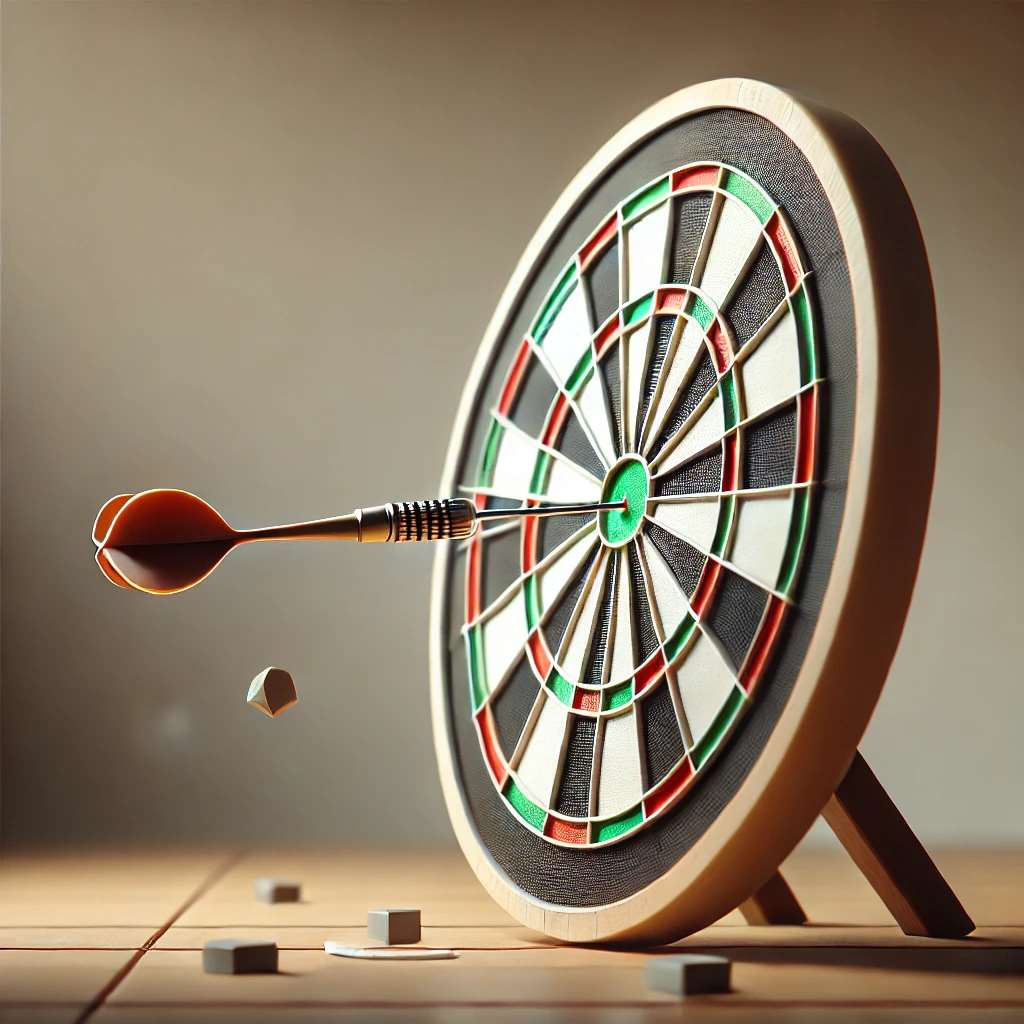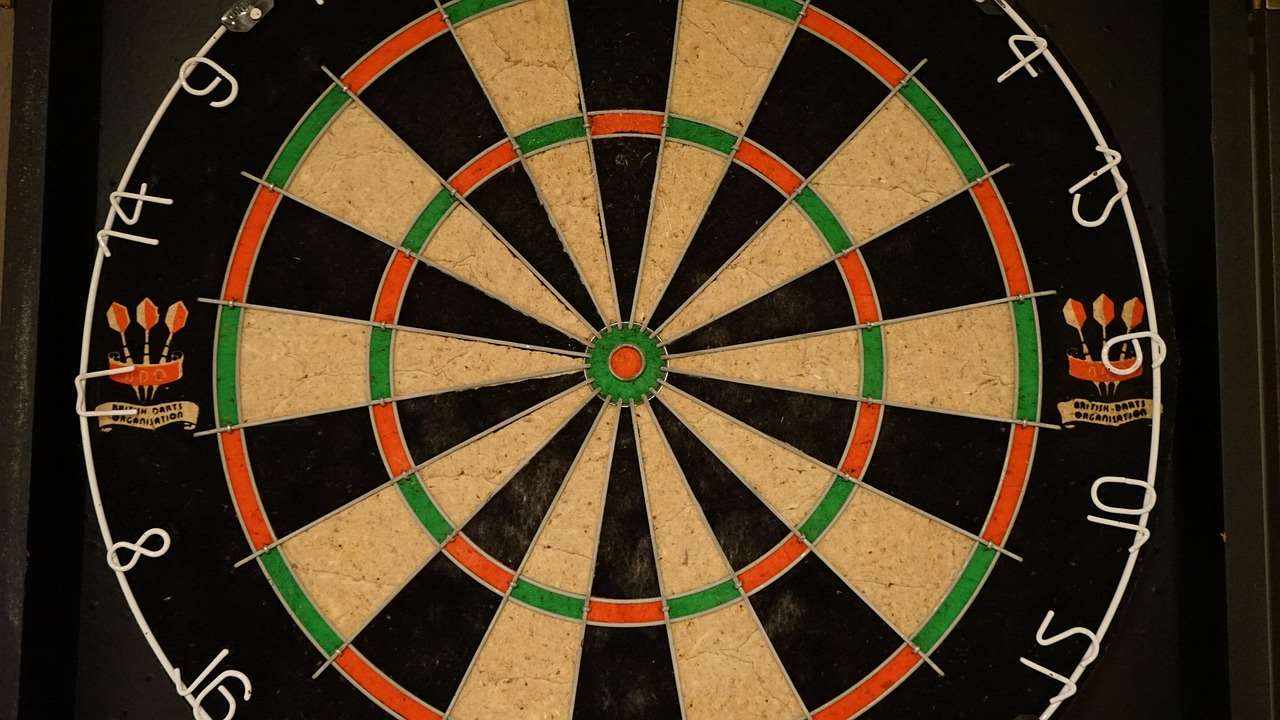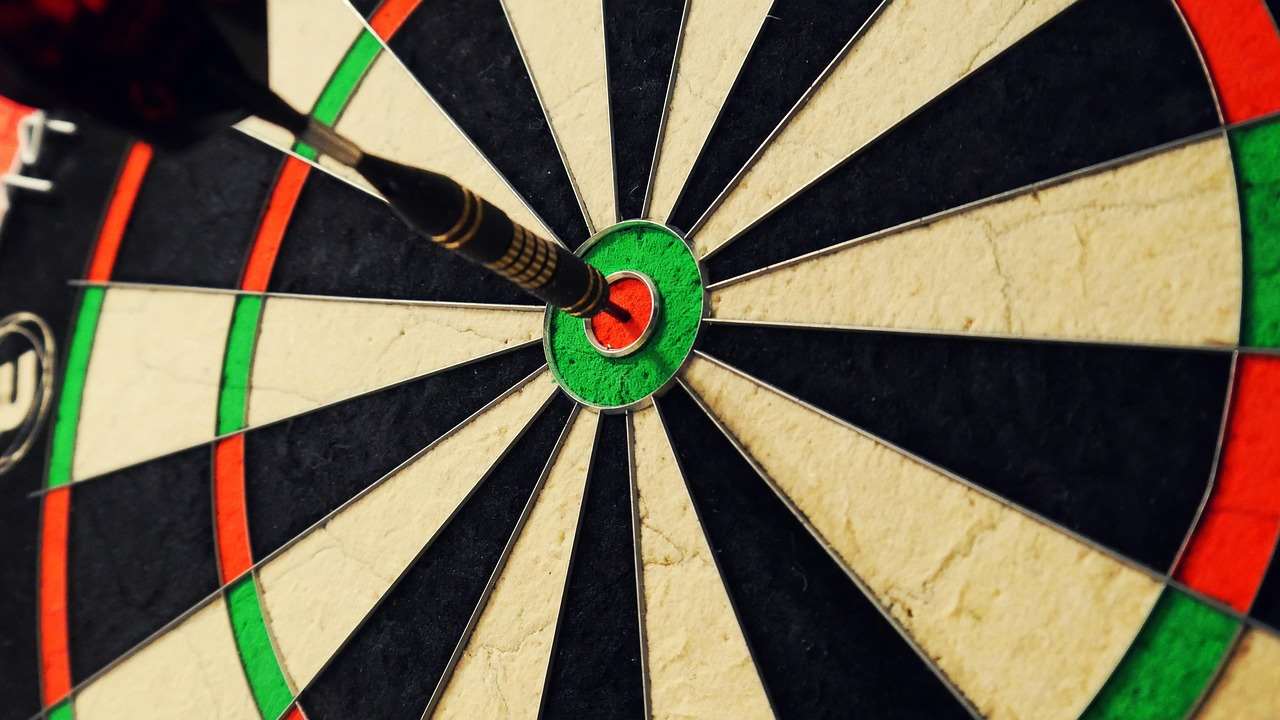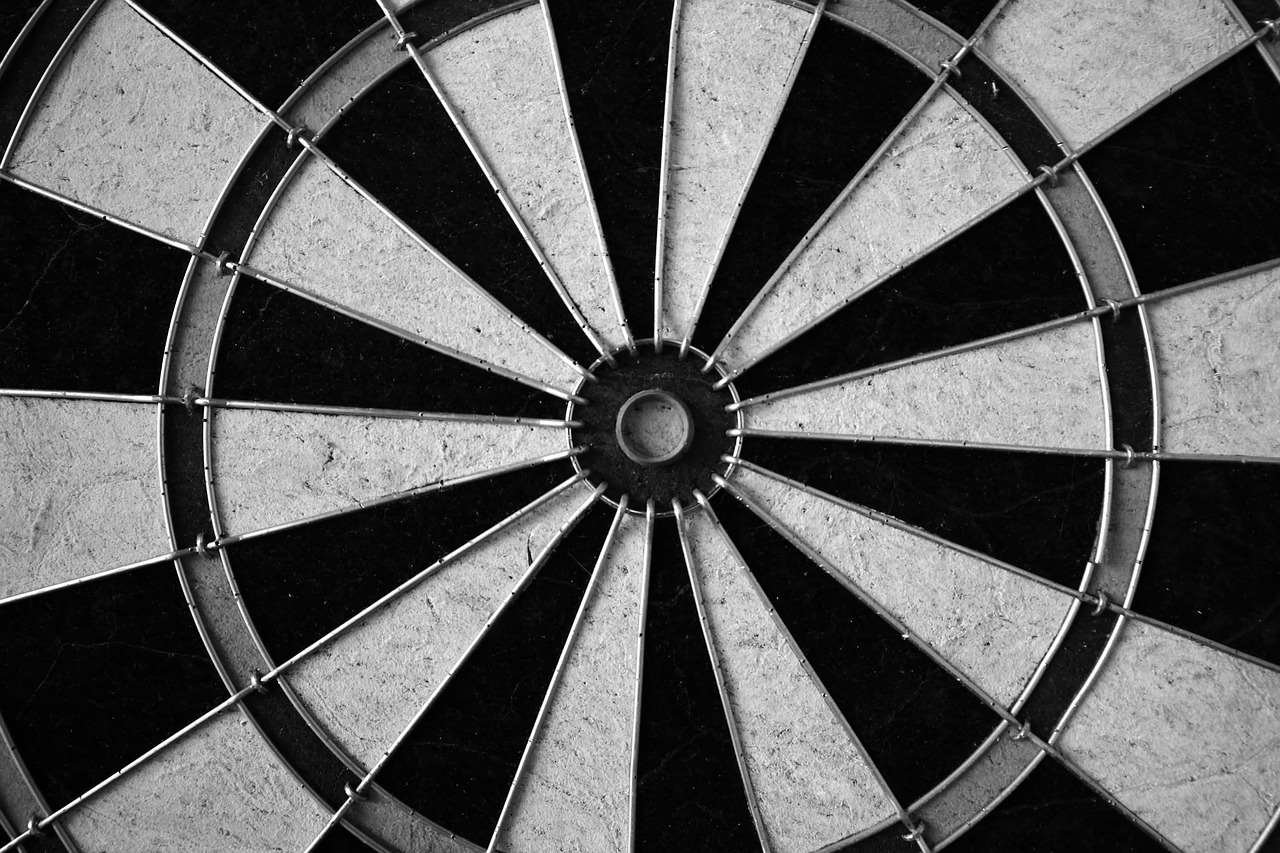If my darts don’t fly straight, the most likely culprit is your grip, stance, or release technique; adjusting these fundamentals will often correct the problem. This article explores common reasons for erratic dart flights, covering everything from equipment issues and throwing mechanics to mental strategies for consistent throws.
⚠️ Still Using Pen & Paper (or a Chalkboard)?! ⚠️
Step into the future! The Dart Counter App handles all the scoring, suggests checkouts, and tracks your stats automatically. It's easier than you think!
Try the Smart Dart Counter App FREE!Ready for an upgrade? Click above!
Why My Darts Don’t Fly Straight: Common Causes
There are numerous reasons why my darts don’t fly straight. Let’s break down some of the most frequent offenders:
- Incorrect Grip: Holding the dart too tightly or loosely can significantly affect its trajectory.
- Inconsistent Stance: A wobbly or unbalanced stance will lead to inconsistent throws.
- Poor Release: Snapping your wrist or releasing the dart too early or late will cause erratic flights.
- Equipment Issues: Bent dart shafts, damaged flights, or mismatched dart weights can all contribute to the problem.
- Psychological Factors: Stress, anxiety, or lack of focus can disrupt your throwing motion.
Addressing these issues one by one is crucial for improving your accuracy and achieving straighter dart flights. Let’s dive deeper into each of these areas.

Diagnosing and Correcting Grip Issues
The grip is the foundation of a consistent throw. Experimenting to find what works for you is essential. Here’s what to consider:
- Grip Pressure: Aim for a relaxed but firm grip. Too tight, and you’ll tense up and lose control. Too loose, and the dart will wobble in your hand. Many players find a medium grip pressure works best.
- Number of Fingers: Most players use three or four fingers to grip the dart. Find what feels most natural and secure for you.
- Grip Position: Experiment with different grip positions on the dart barrel. Some players prefer to grip closer to the point, while others prefer the back.
- Grip Consistency: Once you find a comfortable grip, stick with it. Avoid constantly changing your grip, as this will lead to inconsistent throws.
Practice in front of a mirror to observe your grip and ensure it remains consistent throughout your throwing motion. Consider checking out darts today for related insights.
Perfecting Your Stance for Straighter Throws
A stable and balanced stance is crucial for delivering accurate darts. Consider these key aspects:
- Foot Placement: Position your front foot so it’s pointing towards the dartboard. Your back foot should be slightly behind your front foot for balance.
- Weight Distribution: Distribute your weight evenly between both feet. Avoid leaning too far forward or backward.
- Body Alignment: Keep your body aligned with the dartboard. Avoid twisting or swaying during your throw.
- Consistency is Key: Always use the same stance. Make it a habit, part of your pre-throw routine.
Practice your stance regularly, paying close attention to your balance and alignment. A stable stance helps to ensure my darts don’t fly straight because it provides a solid base for your throwing arm.
Remember, a consistent stance leads to a consistent throw. Explore options for target darts accessories that can enhance your throwing posture and balance.

Mastering the Release: The Final Touch
The release is the final and often most challenging part of the throwing motion. Here’s how to improve it:
- Smooth Follow-Through: Extend your arm fully towards the dartboard, following through with your hand and fingers.
- Avoid Wrist Snap: A wrist snap can introduce unwanted spin and cause the dart to deviate from its intended path. Focus on a smooth, fluid motion from your shoulder and elbow.
- Consistent Release Point: Strive to release the dart at the same point in your throwing motion every time. This requires practice and concentration.
- Practice Makes Perfect: The more you practice your release, the more consistent it will become.
Record yourself throwing darts to analyze your release. This can help you identify any inconsistencies or flaws in your technique. If my darts don’t fly straight despite other corrections, the release is a prime suspect. The Practice darts app with scoring can help track your progress and identify areas for improvement.
Equipment Check: Are Your Darts up to Par?
Even with perfect technique, faulty equipment can sabotage your throws. Regularly inspect your darts for any signs of damage or wear and tear:
- Dart Shafts: Check for bent or cracked shafts. Replace them immediately, as they will affect the dart’s flight.
- Dart Flights: Inspect your flights for tears, creases, or other damage. Replace them when necessary. Also, consider the shape and size of your flights. Different flights provide different levels of stability and control.
- Dart Points: Make sure your dart points are sharp and free of burrs. Dull points can cause bounce-outs and damage to your dartboard.
- Dart Weight: Ensure all your darts are the same weight. Mismatched dart weights will lead to inconsistent throws.
Maintaining your darts is essential for achieving consistent and accurate throws. Think about options for a dart flight printing machine for sale to personalize your flights and ensure they are always in top condition.

The Mental Game: Staying Focused and Relaxed
Darts is not just a physical game; it’s also a mental one. Stress, anxiety, and lack of focus can all negatively impact your performance. Here are some tips for staying mentally strong:
- Stay Calm: Breathe deeply and try to relax before each throw.
- Focus on the Target: Visualize your dart hitting the target.
- Avoid Distractions: Tune out any distractions and concentrate on your throw.
- Stay Positive: Don’t get discouraged by bad throws. Learn from your mistakes and move on.
- Develop a Routine: Establish a pre-throw routine to help you focus and prepare mentally.
If my darts don’t fly straight, sometimes it’s not about the physical technique but the mental state. A clear mind is essential for consistent accuracy. Explore the possibilities for target darts corona vision to enhance your focus and concentration during practice.
Understanding Dart Flight Characteristics
Different dart flights will impact the way your darts travel through the air. There are many different shapes and sizes of flights available, each designed for different throwing styles and dart setups.
- Standard Flights: These are the most common type of dart flight, offering a good balance of stability and control.
- Slim Flights: Slim flights are more aerodynamic than standard flights, allowing for faster dart speeds and tighter groupings.
- Kite Flights: Kite flights provide excellent stability, making them ideal for beginners or players who struggle with control.
- Pear Flights: Pear flights offer a combination of stability and aerodynamics.
Experiment with different flight shapes and sizes to find what works best for you. The right flights can make a significant difference in your accuracy and consistency. You might even find a darts flight template helpful in creating your own.

Fine-Tuning Your Throw: Micro-Adjustments
Once you’ve addressed the fundamentals, it’s time to fine-tune your throw and make subtle adjustments to improve your accuracy. This involves paying close attention to your dart groupings and making small changes to your grip, stance, or release until my darts don’t fly straight, but consistently hit the mark.
- Observe Your Darts: Pay attention to how your darts are landing in the board. Are they grouping to the left, right, high, or low?
- Adjust Your Grip: Try making small adjustments to your grip to see if it affects your dart groupings.
- Adjust Your Stance: Experiment with slightly different stance positions to see if it improves your balance and alignment.
- Adjust Your Release: Focus on releasing the dart at the same point in your throwing motion every time.
Remember that even small adjustments can make a big difference in your accuracy. Be patient and persistent, and don’t be afraid to experiment. Is there a dartboard untitled goose game variation for advanced skill development?

Seek Expert Advice and Learn from Others
If you’re struggling to improve your dart game on your own, don’t hesitate to seek expert advice. There are many experienced dart players and coaches who can provide valuable insights and guidance. Local dart leagues are great places to learn. Don’t worry about dart set difference when starting out – the most important thing is developing a solid throwing technique.
- Join a Dart League: Playing in a dart league is a great way to meet other dart players and learn from their experiences.
- Take Lessons: Consider taking lessons from a qualified dart coach.
- Watch Professional Dart Players: Observe the techniques of professional dart players and try to emulate their throwing styles.
Learning from others can help you identify areas for improvement and accelerate your progress.
Conclusion: Achieving Consistent Dart Flights
Getting my darts don’t fly straight is a common frustration, but it’s a problem that can be solved with careful attention to the fundamentals. By focusing on your grip, stance, release, equipment, and mental game, you can significantly improve your accuracy and consistency. Remember to practice regularly, be patient, and don’t be afraid to experiment. With dedication and persistence, you can achieve straighter dart flights and enjoy the game even more.
Ready to take your dart game to the next level? Start by assessing your current technique and identifying areas for improvement. Practice regularly and don’t be afraid to seek advice from experienced players or coaches. Good luck, and happy darting!
Hi, I’m Dieter, and I created Dartcounter (Dartcounterapp.com). My motivation wasn’t being a darts expert – quite the opposite! When I first started playing, I loved the game but found keeping accurate scores and tracking stats difficult and distracting.
I figured I couldn’t be the only one struggling with this. So, I decided to build a solution: an easy-to-use application that everyone, no matter their experience level, could use to manage scoring effortlessly.
My goal for Dartcounter was simple: let the app handle the numbers – the scoring, the averages, the stats, even checkout suggestions – so players could focus purely on their throw and enjoying the game. It began as a way to solve my own beginner’s problem, and I’m thrilled it has grown into a helpful tool for the wider darts community.